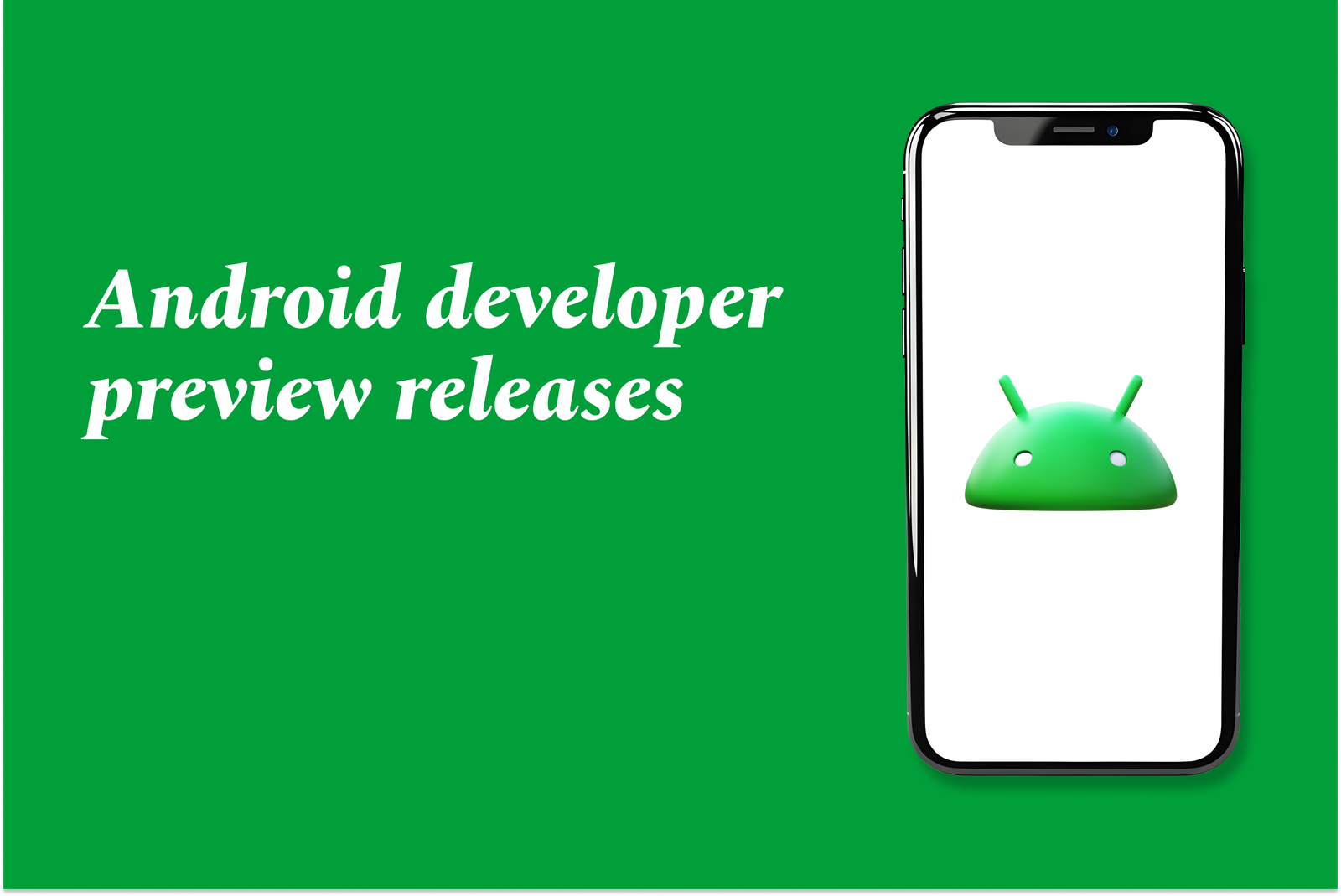Android Developer Preview Releases
Android developer preview releases are early versions of upcoming Android OS updates made available to developers for testing new features, APIs, and compatibility. They help developers prepare apps ahead of the official public launch, ensuring smoother transitions and better app performance.
Android developer preview releases
1 ) Early Release of Android 16 Developer Preview
Google released the first developer preview of Android 16 in November 2024, targeting a Q2 2025 final release.
This is a shift from previous years with an earlier release intended to help device manufacturers deliver updates faster.
Developers can test the preview on Pixel 6 series and newer devices.
2 ) Focus on Privacy and Health Data
Android 16 introduces an embedded photo picker API allowing users to share specific media without granting full storage access.
A new Health Connect API supports secure management of health data in FHIR format, enhancing privacy akin to iOS health features.
The update includes enhancements to Privacy Sandbox, aimed at replacing Android's advertising ID system to improve user privacy while maintaining ad capabilities.
3 ) Twice Yearly API Release Plan for 2025
Alongside the major Android 16 release in Q2, a second minor SDK release is scheduled for Q4 2025 with new APIs and improvements.
The Q4 release will focus on features and bug fixes without app impacting behavior changes.
Quarterly updates will continue, supporting continuous improvements in app quality and device compatibility.
4 ) New API Versioning and Compatibility Tools
Support continues for SDK_INT and VERSION_CODES constants to manage API level checks.
New constants like SDK_INT_FULL and VERSION_CODES_FULL allow distinguishing between major and minor releases.
Build.getMinorSdkVersion() helps developers identify minor SDK versions for fine grained compatibility handling.
These APIs are in preview and subject to changes; feedback is encouraged.
5 ) Developer Impact and Timeline
The earlier Q2 release requires developers to complete compatibility tests earlier than past years.
Google aims for platform stability by March 2025, allowing time for app updates before the public release.
A public beta program will launch in January 2025, with additional developer previews planned through December 2024.
This accelerated and more frequent release cadence highlights Google's commitment to faster innovation, enhanced privacy, and developer tools for the Android ecosystem.
https://justacademy.in/news-detail/flutter-4-migration-guide-for-teams
https://justacademy.in/news-detail/best-ci/cd-tools-for-flutter-projects
https://justacademy.in/news-detail/top-flutter-packages-to-use-in-2025
https://justacademy.in/news-detail/ai-in-flutter:-smarter-ux-and-features
https://justacademy.in/news-detail/flutter-job-interviews:-what’s-changed
Related Posts
In 2025, top Angular libraries offer modern, feature-rich components and tools for building dynamic web apps. From powerful data grids to low-code platforms like UI Bakery, these libraries enhance development speed, UI design, and scalability, making them essential for Angular developers.
Migrating from AngularJS to Angular 17 involves gradually upgrading your app by running both frameworks together using tools like ngUpgrade, rewriting components in TypeScript, and adopting Angular’s modern architecture to enhance performance, maintainability, and long-term support.
Angular state management tools help organize and handle app data efficiently, improving scalability and maintainability. Popular options include NgRx for robust, RxJS-based patterns, and newer Signal Store solutions that offer simpler, reactive approaches integrated tightly with Angular’s latest features.
RxJS in Angular empowers developers to manage asynchronous data streams with powerful operators like `forkJoin`, `combineLatest`, and `zip`. Mastering these key operators in 2025 is essential for building efficient, reactive applications that handle complex event sequences seamlessly.
Angular performance optimization in 2025 focuses on improving app speed and responsiveness by using techniques like OnPush change detection, lazy loading, efficient data caching, and AOT compilation. These practices reduce load times, enhance user experience, and ensure scalable, fast Angular applications.
In 2025, Angular remains preferred for large-scale, enterprise apps with its robust, all-in-one framework, while Vue attracts developers seeking simplicity and fast development for smaller projects. Both frameworks excel, with choice driven by project needs and team expertise.
Angular Signals are a new reactive primitive in Angular 16 that enable fine-grained, efficient change detection by automatically tracking dependencies and updating only affected parts of the UI. They simplify state management and boost app performance, revolutionizing Angular's reactivity model.
Angular interview questions to prepare in 2025 focus on core concepts like components, directives, data binding, routing, and dependency injection, along with TypeScript mastery and latest Angular features to ensure strong practical knowledge for building scalable, efficient web applications.
AngularJS reached its official end of support in January 2022, meaning no further updates or security patches. To ensure app security and performance, developers should consider migrating to modern Angular versions or seek third-party long-term support options if immediate migration isn’t possible.
The Angular Roadmap 2025 highlights upcoming features focused on improving developer experience and performance, including zoneless Angular, Signals integration, enhanced Forms, async data handling, improved HMR, and expanded Angular Material/CDK enhancements, driving modern, efficient web app development.










